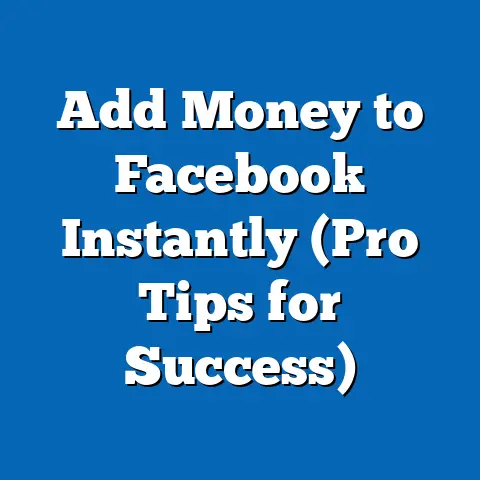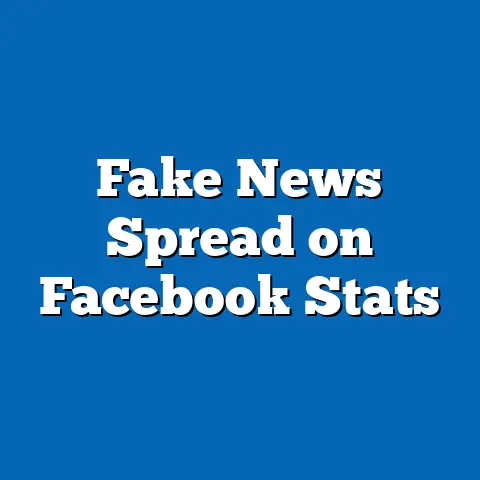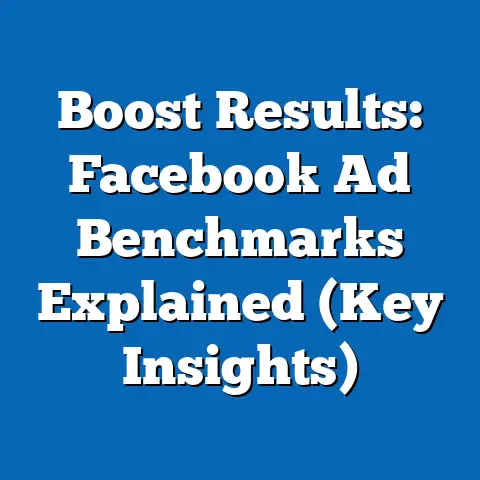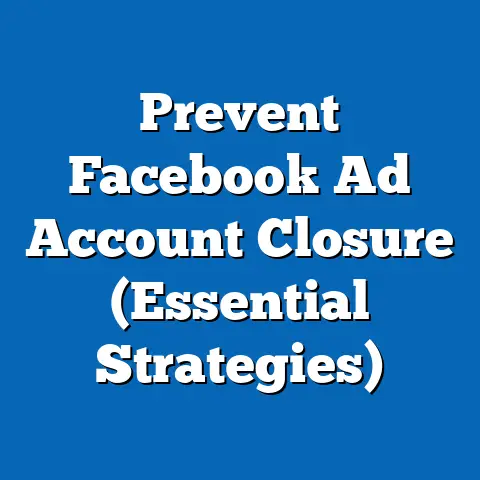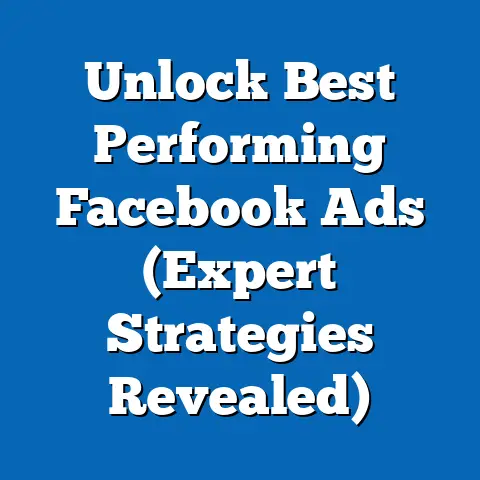Master Meta fb ad Guidelines (Expert Strategy Unveiled)
Facebook advertising. Just the phrase can send shivers down the spines of marketers, both seasoned and new. Why? Because it feels like navigating a constantly shifting landscape. One wrong step, one overlooked guideline, and your ad could be rejected, your account suspended, and your carefully crafted campaign grounded before it even takes flight.
But here’s the thing: Facebook, now Meta, offers an unparalleled opportunity to connect with a massive, diverse audience. We’re talking billions of potential customers, all within reach through sophisticated targeting options and powerful algorithms. I’ve personally seen small businesses explode in growth and established brands revitalize their image, all thanks to the strategic use of Meta Ads.
The key? Mastering the platform’s advertising guidelines. It’s not just about avoiding penalties; it’s about understanding how to leverage these guidelines to create campaigns that resonate, convert, and ultimately, drive business growth.
Understanding Meta’s Advertising Ecosystem
Think of Meta’s advertising ecosystem as a vast, bustling city. There are different neighborhoods (ad placements), various modes of transportation (ad formats), and countless residents (your target audience). To navigate this city effectively, you need a map – and that’s what this section provides.
At its heart, the Meta advertising ecosystem comprises various ad formats strategically placed across different platforms. You’ve got:
- Image Ads: The classic, simple, yet effective option. Think eye-catching visuals with concise copy.
- Video Ads: Perfect for storytelling, showcasing product demos, or creating engaging brand experiences.
- Carousel Ads: Ideal for displaying multiple products or highlighting different features of a single product.
- Collection Ads: Designed for e-commerce, these ads allow users to browse and purchase products directly within the Facebook app.
- Instant Experience Ads: Full-screen, mobile-optimized ads that load instantly and provide an immersive experience.
These ad formats can appear in a variety of placements:
- Facebook News Feed: The most common and often most effective placement.
- Instagram Feed: Ideal for visually appealing content.
- Facebook Stories & Instagram Stories: Short, engaging content that disappears after 24 hours.
- Facebook Marketplace: Great for reaching users actively looking to buy or sell items.
- Audience Network: Extends your reach to a network of third-party apps and websites.
Choosing the right combination of ad format and placement is crucial. I remember working with a local bakery that wanted to promote their new line of artisanal breads. We initially focused on image ads in the Facebook News Feed. While we saw some engagement, it wasn’t quite what we hoped for. We then experimented with video ads showcasing the baking process and the delicious textures of the bread, placing them in Instagram Stories. The results were phenomenal! We saw a significant increase in foot traffic to the bakery, proving the power of aligning ad format with platform and business objective.
Speaking of objectives, it’s vital to define what you want to achieve with your ads. Are you aiming for brand awareness, lead generation, website traffic, or sales conversions? Your objective will dictate not only the ad format and placement but also your targeting strategy and call-to-action.
All of this is managed through the Facebook Ads Manager, your central command center for all things Meta Ads. From creating campaigns and setting budgets to targeting audiences and analyzing results, the Ads Manager is your best friend in the world of Facebook advertising. I can’t stress enough the importance of getting comfortable with this tool. Take the time to explore its features, experiment with different settings, and familiarize yourself with its reporting capabilities.
Takeaway: The Meta advertising ecosystem is vast and complex, but understanding its structure and components is essential for creating successful campaigns. Choose the right ad format and placement based on your business objectives and target audience, and master the Facebook Ads Manager to effectively manage and analyze your campaigns.
Nobody likes them, but they’re essential, especially in the ever-evolving world of online advertising. Meta’s advertising policies are in place to protect users, maintain a positive platform experience, and ensure fair advertising practices. Ignoring these policies is a surefire way to get your ads rejected or, even worse, your account suspended. I’ve seen it happen to businesses of all sizes, and trust me, it’s not a pretty sight.Meta’s advertising policies can be broadly categorized into:
- Prohibited Content: This includes content that is illegal, discriminatory, hateful, or promotes violence. Examples include ads promoting illegal drugs, hate speech targeting specific groups, or content that violates intellectual property rights.
- Restricted Content: This category covers content that is allowed under certain conditions but requires careful consideration and compliance with specific guidelines. Examples include ads promoting alcohol, gambling, or dating services. These types of ads often require age targeting or specific disclaimers.
- Community Standards: These standards outline what is and isn’t allowed on the Facebook platform in general. Your ads must adhere to these standards as well. This includes content that is misleading, deceptive, or spammy.
One of the most common reasons for ad rejection is misleading or deceptive content. This can include exaggerated claims, false promises, or using clickbait tactics to attract attention. I once consulted with a company that was promoting a weight loss product. Their ads featured before-and-after photos that were clearly Photoshopped and made unrealistic claims about the product’s effectiveness. Not surprisingly, their ads were rejected by Meta.
Another common pitfall is violating intellectual property rights. Make sure you have the necessary permissions to use any images, videos, or music in your ads. Using copyrighted material without permission can lead to ad rejection and potential legal issues.
Navigating these policies can feel like walking through a minefield, but here are a few tips to help you stay on the right side of the line:
- Read the Policies Carefully: This might seem obvious, but it’s crucial to thoroughly understand Meta’s advertising policies. They are readily available on the Meta Business Help Center.
- Double-Check Your Ads: Before submitting your ads for review, carefully review them to ensure they comply with all applicable policies.
- Be Transparent: Be honest and upfront about your products or services. Avoid making exaggerated claims or misleading statements.
- Respect Intellectual Property Rights: Only use content that you have the necessary permissions to use.
- Stay Updated: Meta’s advertising policies are constantly evolving, so it’s important to stay informed about any changes.
If your ad is rejected, don’t panic! The Ads Manager will usually provide a reason for the rejection. Review the relevant policy, make the necessary changes to your ad, and resubmit it for review. If you’re still unsure why your ad was rejected, you can contact Meta’s support team for assistance.
Takeaway: Adhering to Meta’s advertising policies is not just about avoiding penalties; it’s about building trust with your audience and creating a positive brand image. Take the time to understand the policies, double-check your ads, and stay updated on any changes.
Targeting Your Audience Effectively
Okay, you’ve got your ad formats down, you’re familiar with the guidelines, now it’s time to talk about the secret sauce: targeting. Think of it this way, you could have the most beautifully crafted ad in the world, but if it’s shown to the wrong people, it’s like shouting into the void. Meta’s powerful targeting options allow you to laser-focus your ads on the people who are most likely to be interested in your products or services.
Meta offers a wealth of targeting options, including:
- Demographics: Target users based on age, gender, location, education, job title, and more.
- Interests: Reach users based on their interests, hobbies, and passions.
- Behaviors: Target users based on their online behavior, purchase history, and device usage.
- Custom Audiences: Upload your own customer data (email lists, phone numbers) to create targeted audiences.
- Lookalike Audiences: Expand your reach by targeting users who are similar to your existing customers.
The key to effective targeting is segmentation. Don’t try to target everyone with the same ad. Instead, break your audience into smaller, more specific segments based on their demographics, interests, and behaviors.
For example, let’s say you’re selling running shoes. You could create separate ad campaigns for:
- Beginner Runners: Targeting users who are new to running and interested in topics like “couch to 5k” or “running for beginners.”
- Experienced Marathon Runners: Targeting users who are experienced runners and interested in topics like “marathon training” or “running gear.”
- Trail Runners: Targeting users who are interested in trail running and outdoor activities.
By creating these targeted segments, you can tailor your ad copy and visuals to resonate with each group, increasing the likelihood of conversions.
Lookalike audiences are another incredibly powerful tool. They allow you to expand your reach by targeting users who share similar characteristics with your existing customers. This is a great way to find new customers who are likely to be interested in your products or services.
I remember working with an online clothing boutique that was struggling to reach new customers. We created a lookalike audience based on their existing customer data and targeted users who shared similar demographics, interests, and purchase behavior. The results were remarkable! We saw a significant increase in website traffic and sales, proving the power of lookalike audiences.
Takeaway: Effective targeting is essential for maximizing the ROI of your Meta Ads. Segment your audience, leverage custom audiences and lookalike audiences, and tailor your ad copy and visuals to resonate with each group.
Crafting Compelling Ad Copy and Visuals
Now that you’ve got your targeting nailed down, it’s time to focus on the creative aspects of your ads: the ad copy and visuals. These are the elements that will grab users’ attention, communicate your message, and ultimately, drive action.
Ad Copy:
Writing persuasive ad copy is an art form. It’s about striking the right balance between being informative, engaging, and concise. Here are a few best practices:
- Headline: Your headline is the first thing users will see, so make it count. Use strong verbs, highlight key benefits, and create a sense of urgency.
- Body Text: Use your body text to expand on your headline and provide more details about your product or service. Focus on the benefits, not just the features.
- Call-to-Action (CTA): Your CTA tells users what you want them to do. Use clear, concise language and create a sense of urgency. Examples include “Shop Now,” “Learn More,” or “Sign Up Today.”
Visuals:
High-quality visuals are essential for capturing attention and complementing your ad copy. Here are a few tips:
- Choose Relevant Images and Videos: Your visuals should be relevant to your product or service and align with your brand.
- Use High-Resolution Images and Videos: Avoid using blurry or pixelated visuals.
- Keep it Simple: Avoid cluttering your visuals with too much text or graphics.
- A/B Test Your Visuals: Experiment with different images and videos to see what resonates best with your audience.
One of the most effective strategies for crafting compelling ad copy and visuals is A/B testing. This involves creating multiple versions of your ad with different headlines, body text, visuals, and CTAs, and then testing them against each other to see which performs best.
I once worked with a restaurant that was promoting their new menu. We created two versions of their ad: one with a photo of their most popular dish and another with a video showcasing the restaurant’s atmosphere. We ran both ads simultaneously and tracked their performance. The video ad significantly outperformed the photo ad, generating more clicks, engagement, and ultimately, reservations. This demonstrates the power of A/B testing and how it can help you optimize your ads for maximum impact.
Takeaway: Compelling ad copy and visuals are essential for capturing attention and driving action. Use strong headlines, focus on benefits, and create clear CTAs. Choose relevant, high-quality visuals and A/B test your ads to optimize for maximum impact.
Budgeting and Bidding Strategies
You’ve got your targeting dialed in, your ad copy and visuals are on point, now it’s time to talk money. Setting a realistic budget and choosing the right bidding strategy are crucial for maximizing your return on ad spend (ROAS).
Meta offers two main budgeting options:
- Daily Budget: Sets a fixed amount you’re willing to spend each day.
- Lifetime Budget: Sets a total amount you’re willing to spend over the entire duration of your campaign.
Choosing between daily and lifetime budgets depends on your campaign goals and your level of involvement. If you want to closely monitor your campaign and make adjustments on a daily basis, a daily budget might be the best option. If you prefer a more hands-off approach, a lifetime budget might be more suitable.
When setting your budget, it’s important to consider your campaign goals and your target audience. A brand awareness campaign might require a smaller budget than a lead generation campaign. Similarly, targeting a large, broad audience might require a larger budget than targeting a small, niche audience.
Meta also offers different bidding strategies:
- Automatic Bidding: Meta automatically sets your bids to get the most results for your budget.
- Manual Bidding: You manually set your bids for each ad auction.
Automatic bidding is a good option for beginners or for campaigns where you’re not sure what bids to set. Manual bidding gives you more control over your bids, but it also requires more expertise and monitoring.
One of the most important metrics to track is your ROAS. This measures the amount of revenue you generate for every dollar you spend on advertising. To calculate your ROAS, divide your revenue by your ad spend.
I remember working with an e-commerce business that was struggling to achieve a positive ROAS. We analyzed their ad campaigns and discovered that they were targeting a broad audience with generic ad copy and visuals. We segmented their audience, created more targeted ad campaigns, and optimized their bids. As a result, their ROAS significantly improved, demonstrating the importance of monitoring ad performance and adjusting budget allocations based on results.
Takeaway: Setting a realistic budget and choosing the right bidding strategy are crucial for maximizing your ROAS. Consider your campaign goals, target audience, and level of involvement when setting your budget. Track your ROAS and adjust your budget allocations based on results.
Conclusion
Mastering Meta’s ad guidelines and employing expert strategies is not just about avoiding penalties; it’s about unlocking the full potential of Facebook advertising. It’s about creating campaigns that resonate with your audience, drive results, and ultimately, fuel business growth.
Remember, the world of Facebook advertising is constantly evolving, so it’s important to stay updated with any changes in Meta’s advertising policies and best practices. Continuously test, optimize, and refine your strategies to stay ahead of the curve.
I’ve seen firsthand the transformative power of effective Facebook Ads. From helping small businesses reach new customers to revitalizing established brands, the platform offers unparalleled opportunities for growth and connection.
So, go forth, armed with the knowledge and strategies you’ve gained in this guide. Embrace the challenge, experiment with different approaches, and never stop learning. The potential of Facebook Ads is limitless, and with a little dedication and expertise, you can achieve remarkable results. Now get out there and start creating some amazing ad campaigns!

